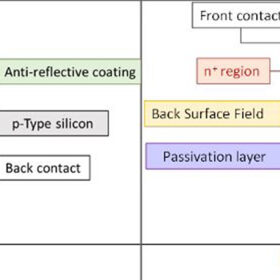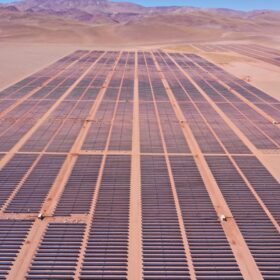Solar module prices remain steady amid unchanged market fundamentals
In a new weekly update for pv magazine, OPIS, a Dow Jones company, provides a quick look at the main price trends in the global PV industry.
Environmental sustainability in PV technology advancements – life cycle assessment of PERC modules
As photovoltaic (PV) technologies evolve, understanding their environmental implications is crucial for a sustainable energy transition. IEA PVPS Task 12 analyzes the environmental impact of passivated emitter and rear cell (PERC) technology in PV installations in comparison to the monocrystalline silicon technology (AI-BSF) and the trend towards installing horizontal singla-axis tracker systems as opposed to fixed tilt systems. Primary data from one PERC and tracker manufacturer enable this study’s conclusions. Using the life cycle assessment (LCA) methodology, the study compares two locations in Italy with different irradiation patterns to evaluate the sensitivity to solar irradiation. The findings reveal that PERC technology and horizontal single-axis tracker systems demonstrate lower environmental impacts compared to Al-BSF and fixed tilt configurations.
Dry Amazon delivers sunny start to 2024 for South America
In a new weekly update for pv magazine, Solcast, a DNV company, reports that Chile, Uruguay and Argentina saw irradiance up 5% to 15% above normal in January and February. Responsible for the surplus sunlight across South America was the ongoing Amazon drought, and circulation changes that pushed weather fronts further south of the continent than usual.
Can anything topple lithium-ion?
The need for long-duration energy storage in a net-zero world is undeniable but with conventional battery prices tumbling, can anything dislodge the mainstream grip of lithium ion? S&P Global’s Susan Taylor provides an update on non-lithium storage technologies.
Polysilicon prices persist in potential trend downward, governed by unfavorable factors
In a new weekly update for pv magazine, OPIS, a Dow Jones company, offers bite-sized analysis on solar PV module supply and price trends.
‘Creating networks is essential for women’
In the third article of a series, Women in Solar Europe (WiSEu) gives voice to Aga Michalak, the head of marketing, BD and ESG at JinkoSolar EU. She says networks among the solar industry is where women can build meaningful relationships, get support, find role models, and, most of all, where they can have a voice and are heard within a safe space.
PV and prices, the (not so fast) uptake of solar in Argentina and Chile
The Atacama Desert in Argentina and Chile is the sunniest region on earth. Despite the excellent solar radiation resource availability and plenty of room on rooftops and on the ground, solar PV is not as widespread in either country as would have been expected based on the initial deployment of large-scale PV power plants in both countries some ten years ago.
Electrolyzer prices – what to expect
In addition to the cost of electricity, the price of hydrogen depends largely on the up-front investment cost of the electrolyzer. The lower the full-load hours, the greater the impact. Analyst BloombergNEF (BNEF) sees a number of different possible pathways for the market to develop.
Digitalized and responsive PV, the driver of grid and market evolution
ETIP PV explains how the energy system integration of PV should transition towards a smart and digitalized system, supported firstly by digitalized PV manufacturing and system and secondly by intelligent distribution control.
Who maintains the chargers?
While much of the focus on electric vehicle (EV) charging infrastructure focuses on volume, what about quality? And who is going to maintain a multi-million strong fleet of EV chargers?










